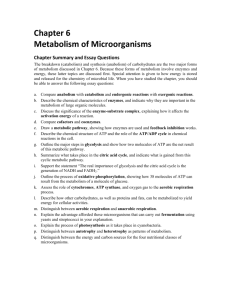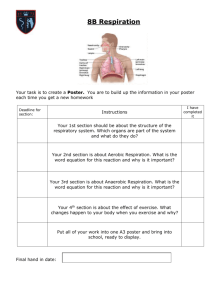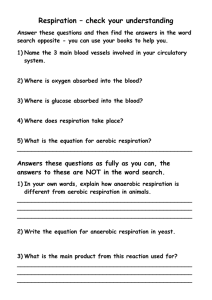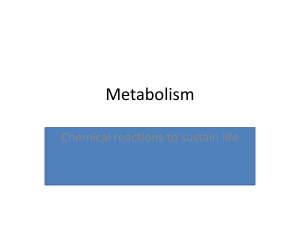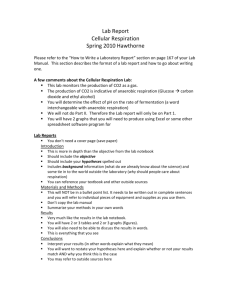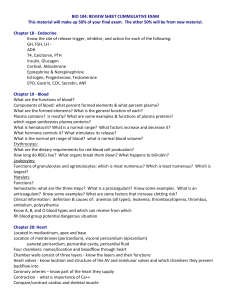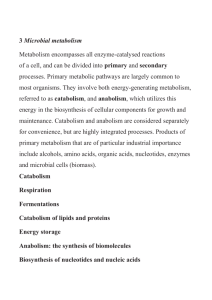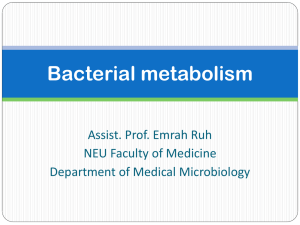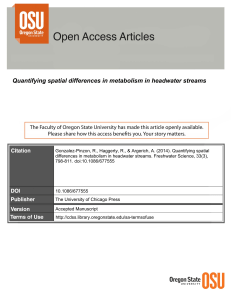Cellular_Respiration_Answers_1
advertisement
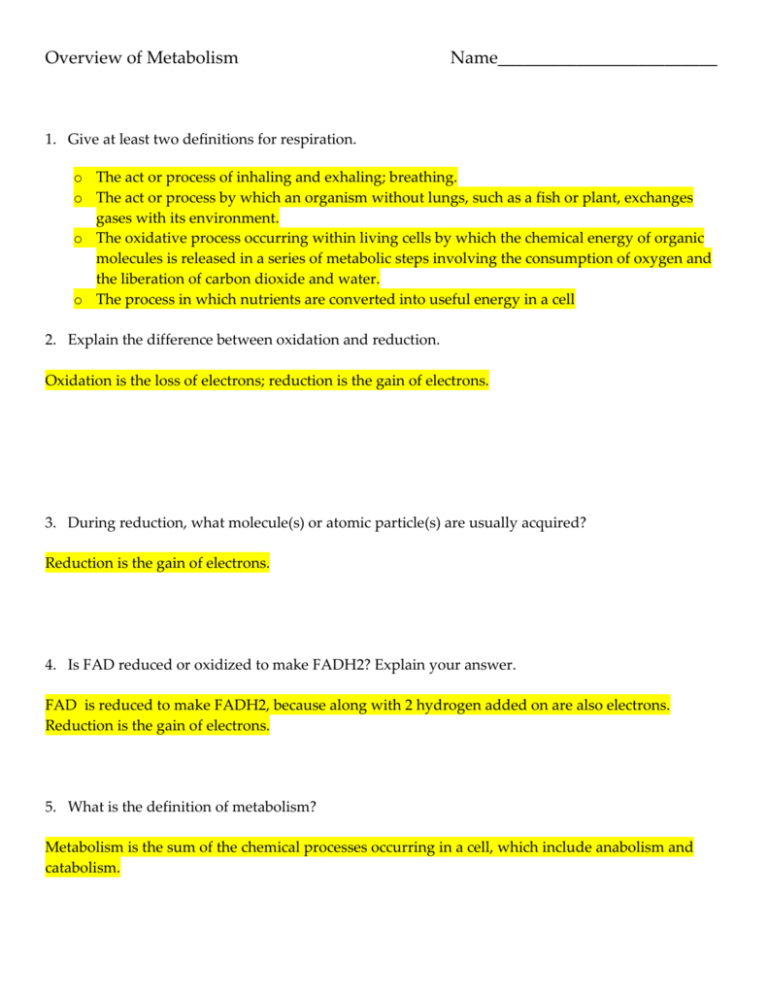
Overview of Metabolism Name_________________________ 1. Give at least two definitions for respiration. o The act or process of inhaling and exhaling; breathing. o The act or process by which an organism without lungs, such as a fish or plant, exchanges gases with its environment. o The oxidative process occurring within living cells by which the chemical energy of organic molecules is released in a series of metabolic steps involving the consumption of oxygen and the liberation of carbon dioxide and water. o The process in which nutrients are converted into useful energy in a cell 2. Explain the difference between oxidation and reduction. Oxidation is the loss of electrons; reduction is the gain of electrons. 3. During reduction, what molecule(s) or atomic particle(s) are usually acquired? Reduction is the gain of electrons. 4. Is FAD reduced or oxidized to make FADH2? Explain your answer. FAD is reduced to make FADH2, because along with 2 hydrogen added on are also electrons. Reduction is the gain of electrons. 5. What is the definition of metabolism? Metabolism is the sum of the chemical processes occurring in a cell, which include anabolism and catabolism. 6. Fill in the following table regarding types of metabolism: Definition Dehydration synthesis or hydrolysis? Example of this process a metabolic process in which energy is used to make compounds Dehydration synthesis Photosynthsis Hydrolysis Cellular Respiration Anabolism Catabolism 7. destructive metabolism involving the release of energy and resulting in the breakdown of complex materials within the organism Distinguish between these three terms: Aerobic respiration: the process of cells using oxygen to break down molecules and create energy Anaerobic respiration: form of respiration using electron acceptors other than oxygen Fermentation: The anaerobic conversion of sugar to carbon dioxide and alcohol
